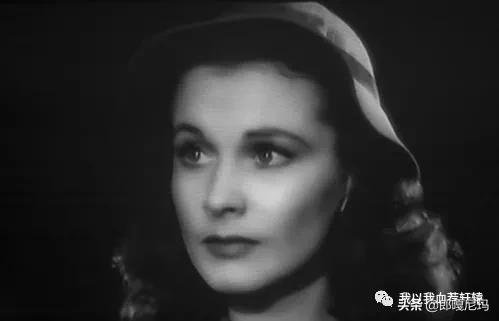
The Blue Bridge: A nail in the history of world cinema
Huang Zihong
In 1940, just after the first non-American Oscar film with a flawless performance in Hollywood's "Gone with the Wind" and "Scarlett O'Hare" who came out of the original book alive, Vivien Leigh once again achieved a classic movie after missing "Butterfly Dream" with her beloved olive partner Oliver, ushering in the second olive branch handed by Hollywood, the heroine of "Soul Breaking Blue Bridge".
Compared with the epic film "Gone with the Wind", Marla played by Vivien Leigh in the black-and-white movie "Soul Break Blue Bridge" is a simple and kind dancer in a london dance troupe during world war I, before marriage, the captain's fiancé was sent to the front line, and soon came the bad news of death. In a depressed economy, Mara lost her job and was forced to become a prostitute in order to survive. Until one day, when she was soliciting customers at the London train station as usual, she accidentally found that her fiancé was still alive and triumphant. In an instant, the two tearful eyes were facing each other, and their feelings were mixed. The fiancé takes Mara back to her hometown to prepare for marriage, and Mara rekindles her faith in life and hope for love. But from a noble family, Mara, who is a dancer, is cold-hearted. Marla realized that she was at odds with the family, and if they knew about their career as a prostitute, the consequences would be even more dire. So she sneaked away and committed suicide on London's Waterloo Bridge, where she and her fiancé first met.
The film was released in 1941, during World War II, with an emotional experience of World War I, alluding to many of the phenomena of the time. The English title "WaterLoo Bridge", which is the famous Waterloo Bridge in London, is the place where the heroine and the heroine first met each other, the heroine was forced into prostitution and the heroine committed suicide, and she died in a medical car with a Red Cross logo, which is more tragic.
Compared with the male protagonist Robert Taylor, Vivien Leigh's acting skills are pure and easy to do, and the heroine's simplicity, kindness, entanglement, and sincerity are very well acted, especially the ballet performance, looking through the window of the rain curtain, throwing away the umbrella in the rain and kissing passionately, running at the station and waving a leather bag to send off, soliciting customers at the station after many years, secretly wiping off thick lipstick on the phone of her fiancé, and the mixed feelings of the eyes before suicide... Vivien Leigh was easy to navigate. The theme song of the film, "Auld Lang Syne", is a Scottish folk song, and because this film is widely fluencyed by the world, our version is "Friendship Lasts Forever".
Throughout this film, behind the poignant love story, it reveals such a truth: war can only destroy people's bodies, and secular prejudice is the destruction of people's souls. Due to the anti-war ideology and the discussion of human nature, the film can be called a nail in the history of world cinema, and it is also one of the first batch of excellent classic European and American films introduced into China after the reform and opening up.
In 1941, in the Oscar for Best Picture competition, "Rebeca" ("Butterfly Dream"), which is called the first suspense film in history, won the best picture, but it did not affect the popularity and wide circulation of "Soul Breaking Blue Bridge" for more than half a century.